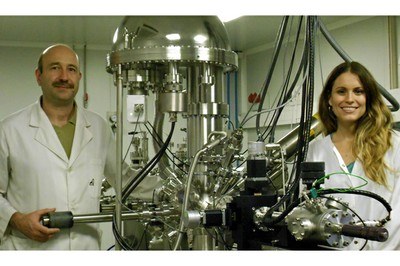Custom-made catalysts that make vehicles and industrial processes more efficient
Nov 05, 2014
A team led by Jordi Llorca, a professor at the Universitat Politècnica de Catalunya (UPC), has discovered that atoms react differently depending on the characteristics of the catalyst that is used.
Catalysts, which are used in 95% of industrial processes, can eliminate pollution from gases emitted by vehicles with combustion engines. They are substances that speed up chemical reactions and the human body has hundreds of them in the form of enzymes. From the point of view of energy, the role of a catalyst is to reduce the amount of energy required to trigger these reactions.
A team of researchers led by Jordi Llorca from the Nanoengineering Research Centre (CRnE) and the Institute of Energy Technologies (INTE)—both of which belong to the UPC—has studied how atoms move in a real catalyst and has demonstrated that they react differently depending on the type of support being used. This research opens the door to designing new custom-made catalysts for energy and industrial applications and for the removal of pollutant gases.
The study, which is a very important step forward in the design of new catalysts with applications in the field of energy, involved the UPC doctoral student Núria Jiménez Divins, researchers Carlos Escudero and Virginia Pérez-Dieste from the ALBA synchrotron, where part of the experiment was carried out, and researcher Inma Angurell from the University of Barcelona (UB), who synthesised the nanoparticles that were used in the experiment.
The study, entitled Influence of the support on surface rearrangements of bimetallic nanoparticles in real catalysts, was published on 31 October in the journal Science.
+info
A team of researchers led by Jordi Llorca from the Nanoengineering Research Centre (CRnE) and the Institute of Energy Technologies (INTE)—both of which belong to the UPC—has studied how atoms move in a real catalyst and has demonstrated that they react differently depending on the type of support being used. This research opens the door to designing new custom-made catalysts for energy and industrial applications and for the removal of pollutant gases.
The study, which is a very important step forward in the design of new catalysts with applications in the field of energy, involved the UPC doctoral student Núria Jiménez Divins, researchers Carlos Escudero and Virginia Pérez-Dieste from the ALBA synchrotron, where part of the experiment was carried out, and researcher Inma Angurell from the University of Barcelona (UB), who synthesised the nanoparticles that were used in the experiment.
The study, entitled Influence of the support on surface rearrangements of bimetallic nanoparticles in real catalysts, was published on 31 October in the journal Science.
+info

Share: